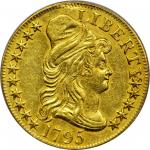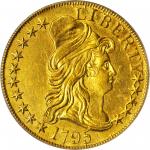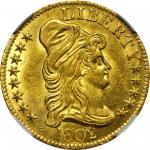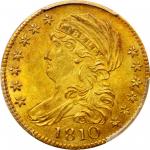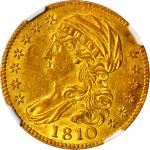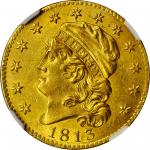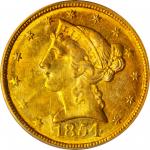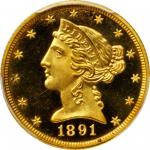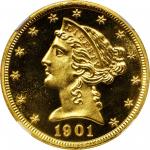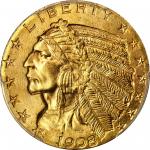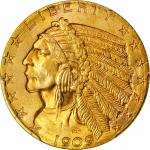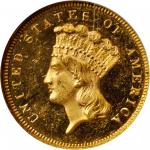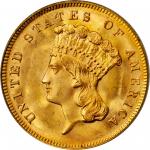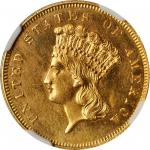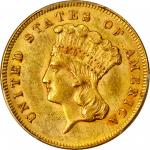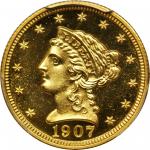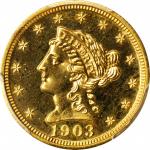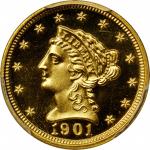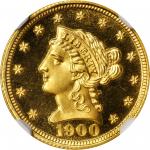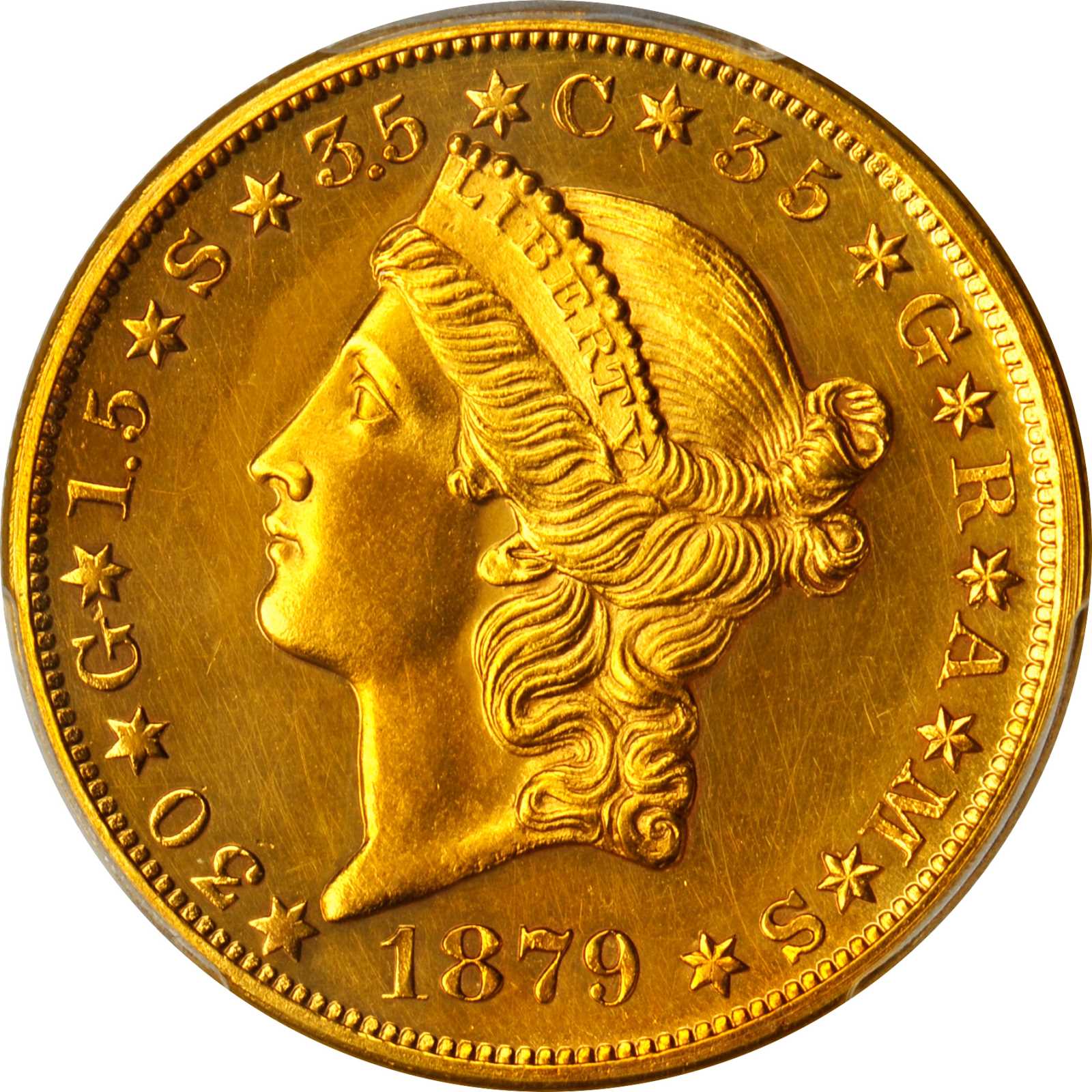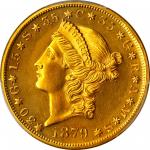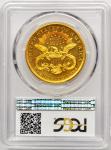1879年20美元金币 PCGS Proof 63
1879 Quintuple Stella. Judd-1643, Pollock-1843. Rarity-7. Gold. Reeded Edge. Proof-63 Cameo (PCGS). Gold Shield Holder.
This magnificent $20 pattern displays rich honey-gold coloration and areas of original patina surrounding the design elements. The fields are glassy and reflective, imparting a remarkable Cameo contrast that is most dramatic on the reverse. Liberty's portrait is impressively intricate and the eagle's feathers are razor sharp. Richly frosted and beautifully preserved, with just a few light hairlines in the fields.
The story of the pattern Metric Goloid $20 gold piece, better known as the Quintuple Stella, follows a parallel path with its smaller and more famous cousin, the $4 Stella. After the Civil War and the Panic of 1873, the monetary condition of the United States began to improve, sparking greater international commerce. As global trade increased especially across the Atlantic, economists and government officials alike began to contemplate new ways of integrating the American monetary system with Europe. Leading the way to a global currency was the European Latin Monetary Union of 1865, a predecessor of the European Union of today that persisted until 1927. The Latin Monetary Union allowed gold and silver coins of its member nations to circulate freely at the same weight and purity standard, facilitating commerce within Continental Europe and across the globe. The success of this union was noted early on by American travelers who experienced the ease with which currency exchange could be performed within the union. This contrasted to the overall difficulty Americans experienced when trying to convert their coins due to the different weight standards. By the early 1870s, the conditions were ripe domestically for proposals to resolve these convertibility problems and bring American gold coin standards in line to those of the Latin Monetary Union. Many of these propositions were innovative and garnered some support, but few ever went beyond the concept phase.
The first serious attempt at creating a coin and alloy to compete with the gold coin of the Latin Monetary Union came in 1879 through John A. Kasson, the United States minister plenipotentiary to the Austro-Hungarian Empire and a former chairman of the Congressional Committee on Coinage, Weights and Measures. While in Europe, Kasson experienced firsthand the inconvenience travelers abroad encountered when changing their money. He proposed a four-dollar coin that would be closer in weight to the most popular European gold coins then in circulation, in particular the Austro-Hungarian 8 florin piece. In addition to the Stella (as the $4 gold piece came to be known), other denominations would be introduced, as well. The proposed new coins would be minted in a metric gold alloy of 85.71% gold, 4.29% silver and 10.00% copper inspired by a similar silver alloy called "goloid" that was patented by Dr. Wheeler William Hubbell of Pennsylvania.
In January 1879, Kasson's proposal was referred to the Congressional Committee on Coinage, Weights and Measures headed by Alexander H. Stephens of Georgia (who had earlier served as the Confederate vice president). Stephens was suitably impressed enough with the proposition that he wrote to Secretary of the Treasury John Sherman requesting that the Mint prepare patterns for Congressional evaluation. While the primary focus was placed on the $4 gold piece, a $20 pattern was also prepared for consideration, along with metric silver and goloid dollars. While the Stella bore unique designs unlike any other coin then in circulation, the metric double eagle or Quintuple Stella (as the denomination came to be known) employed a modified version of the Type III Liberty $20 design then in current use. On the obverse, the alloy composition was indicated in between each of the stars: * 30 * G * 1.5 * S * 3.5 * C * 35 * G * R * A * M * S *. On the reverse, the motto IN GOD WE TRUST above the eagle was replaced by the motto DEO EST GLORIA ("God is Glory"). James Longacre's initials on the truncation of Liberty's neck were retained as credit to the original designer of the Liberty double eagle. The patterns were presented to the Coinage Committee in early 1879 and its members were quite effusive in its praise about the new goloid alloy. Adams and Woodin in their pioneering 1913 work on pattern coins quoted the Committee's report:
"The advantages of this metric gold coin are that the gold is even 30 grams, the silver even 1.5 grams, the copper 3.5 grams. The gold is therefore standard .9 fine and the silver .9 fine in the coin, and the total weight is even 35 grams, and is precisely $20 in value. The superiority of the metal for constancy in value is strikingly shown by the fact that although is measures the same in diameter on a plane as the binary $20 coin, it (the metric) is 24 grains heavier, or 540.25 plus grains in weight, showing as well as in the rich orange color its superiority for practical use, as it flows with a sharper and more distinct finish into the die."
Despite the glowing recommendations of the Coinage Committee and subsequent interest from Congress, neither the Stella nor the Quintuple Stella were carried forward for general circulation. Several hundred examples of the Stella denomination were ultimately struck - both the original presentation pieces as well as restrikes made later often at the behest of members of Congress and other government officials. Many Stellas ended up as pocket pieces or set into jewelry as presents. As a consequence, the Stella became well known in numismatic circles and has even been included in that most popular of all coin books, A Guide Book of United States Coins.
The first example of the Quintuple Stella design struck was Judd-1642 in copper, but it was quickly noticed that a period was missing between the 3 and 5 on the obverse. This was soon noticed and approximately a dozen or so of the corrected version, Judd-1644, were struck in copper and gilt copper. After the copper impressions were prepared, it was finally time to strike the gold version, Judd-1643. The precise mintage of the gold pieces is not known; only five confirmed examples have so far been identified. At present, restrikes are not thought to have been made.
While the Quintuple Stella did not share in its smaller cousin's fame, the numismatic community of the time certainly took notice. Stephens showed an example of the metric double eagle to the American Journal of Numismatics who noted in their April 1879 issue that "[i]t is said to be one of the most beautiful coins ever executed." Even with this early public announcement, no examples of the Quintuple Stella in any metal were made available for public purchase. It was not until November 1881 that the coin appeared publicly when Hubbell's personal specimen was offered for sale by John W. Haseltine in his "Type Table" auction as lot 1490. Haseltine pronounced it as "very beautiful; one of the rarest and most interesting coins in the world." Haseltine's description explained that this specimen was:
"...struck by resolution of Congress and the only one issued; this is the first and only coin extant of the metric system of this denomination; there were 5 struck at the United States Mint, 3 in gold and 2 in copper; the copper specimens are in the Mint Cabinet; the other 2 gold pieces are in the Treasury Department, at Washington, which the Secretary of the Treasury positively refused to issue to any one; therefore, this is the only specimen issued, which was granted to Mr. W. W. Hubbell, the inventor."
The Hubbell Quintuple Stella failed to sell in Haseltine's first offering, though the piece subsequently traded hands several times in the 1880s. On May 16, 1883, George W. Cogan, the youngest son of the first professional numismatist in America Edward Cogan, sent a note to T. Harrison Garrett that he "saw the owner of the $20 goloid piece and can get it for you at $185. Please let me know. He guarantees that only three were struck." While Garrett passed on Cogan's offer, he eventually obtained this specimen in the Maris sale of June 1886. That would prove to be the last time this example was offered for public sale for nearly a century when it was offered as part of the legendary Garrett/Johns Hopkins sale in 1980.
The roster of the five confirmed specimens is as follows:
1.The Brand-Menjou-King Farouk Specimen. Proof.
Virgil M. Brand
Col. E.H.R. Green (unconfirmed)
F.C.C. Boyd (unconfirmed)
Numismatic Gallery's sale of the Adolphe Menjou Collection, March 1948, lot 1813
Sotheby's sale of the King Farouk Collection, February 1954, lot 294
1958 ANA Sale, lot 1676
Our (Stack's) Auction '79 sale, lot 950
Smithsonian Institution via gift of Stack's
2. The Hubbell-Maris-Garrett-Trompeter Specimen. Proof-63 Cameo (PCGS) - The present example.
U.S. Mint, Philadelphia
Dr. William Wheeler Hubbell
J.W. Haseltine, November 1881, lot 1490
H. P. Smith's sale of the Hebbeard Collection, April 1883, lot 453
H. P. Smith's sale of the Dr. Edward Maris Collection, June 1886, lot 230
Our (Bowers and Ruddy) sale of the Garrett/Johns Hopkins University Collection (Garrett II), March 1980, lot 1097
Superior Galleries' sale of the Ed Trompeter Collection, January 1989, lot 4026
Heritage's sale of the Jones Beach Collection, January 2007, lot 1594
3.The Clapp-Eliasberg Specimen. Proof-64 Cameo (PCGS)
H.P. Smith
J.S. Jenks
Elmer Sears
J.M. Clapp/Clapp Estate
Our (Bowers and Merena) sale of the Louis E. Eliasberg, Sr. Collection, May 1996, lot 313
Our (Bowers and Merena) Chicago Rarities sale, April 2008, lot 734
4.The Brand-Carter-Trompeter-Simpson Specimen. Proof-64 Deep Cameo (PCGS).
Our (Stack's) sale of the Virgil M. Brand, Amon Carter, Sr. and Jr. Collection, January 1984, lot 635
Superior Galleries' sale of the Ed Trompeter Collection, February 1999, lot 138
Legend's sale of the Bob Simpson Collection, May 2016, lot 377
5. The Brand-Olsen-Wilkison-Simpson Specimen. Proof-64+ Deep Cameo (PCGS).
Virgil M. Brand
B. Max Mehl's sale of the Olsen Collection, November 1944, lot 624
Wilkison Collection
Paramount
A-Mark
New England Rare Coin Auctions, April 1980, lot 391
Our (Stack's) sale, October 2000, lot 1626
Bob R. Simpson Collection
No less important than the Four-Dollar Stella, the Quintuple Stella has earned its rightful place in the pantheon of great American numismatic rarities. With its prestigious and unbroken provenance reaching all the way back to the Mint itself, this is an extraordinary offering of one of the most desirable of all gold patterns, and not likely to be repeated soon.
PCGS# 862022.
PCGS Population: 1; 1 finer in this designation.
Provenance: Acquired directly from the U.S. Mint by Dr. William Wheeler Hubbell; J.W. Haseltine's Type Table Sale, November 1881, lot 1490; H. P. Smith's sale of the Hebbeard Collection, April 1883, lot 453; H. P. Smith's sale of the Dr. Edward Maris Collection, June 1886, lot 230; Our (Bowers and Ruddy) sale of the Garrett/Johns Hopkins University Collection (Garrett II), March 1980, lot 1097; Superior Galleries' sale of the Ed Trompeter Collection, January 1989, lot 4026; Heritage's sale of the Jones Beach Collection, January 2007, lot 1594.

